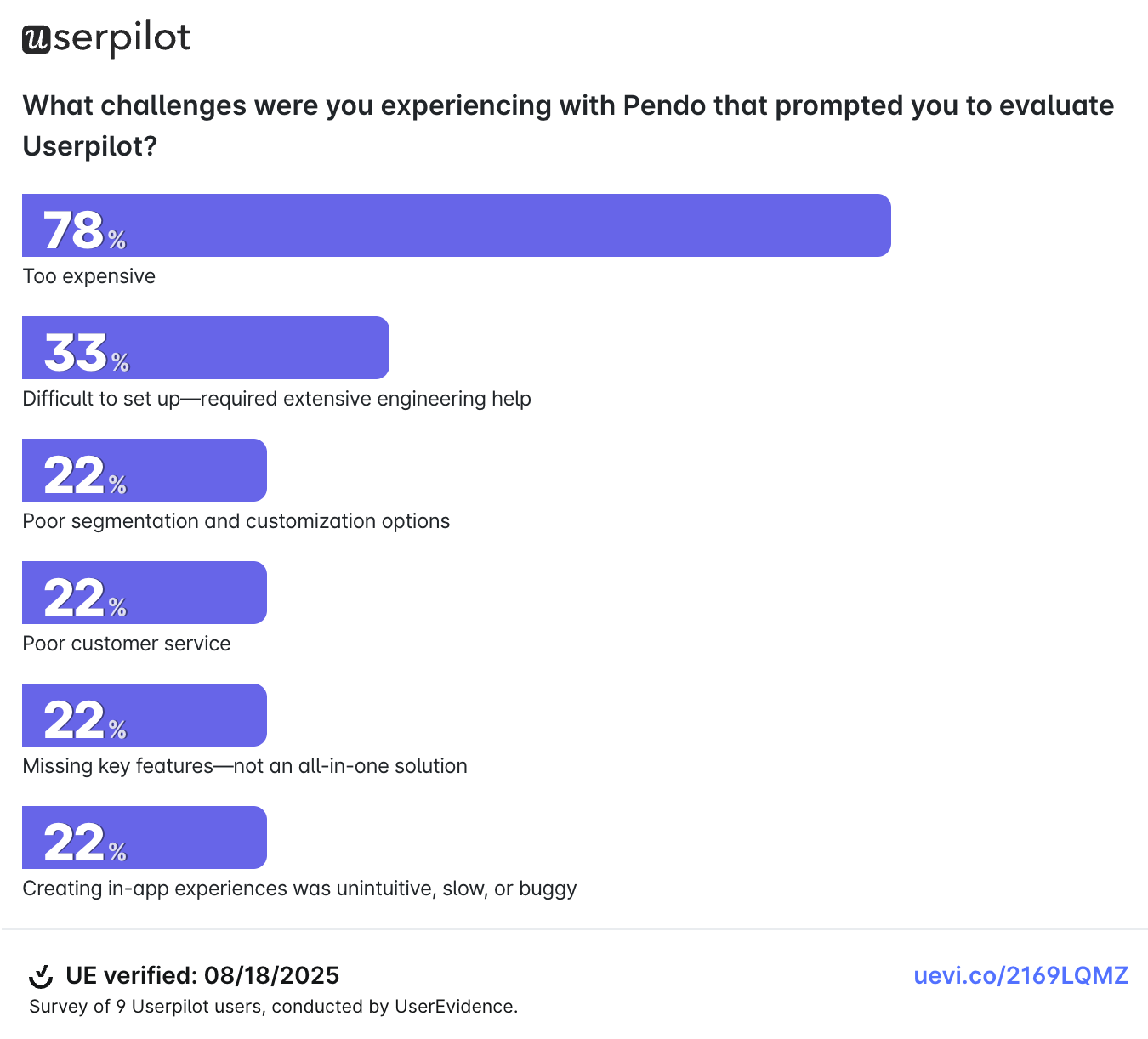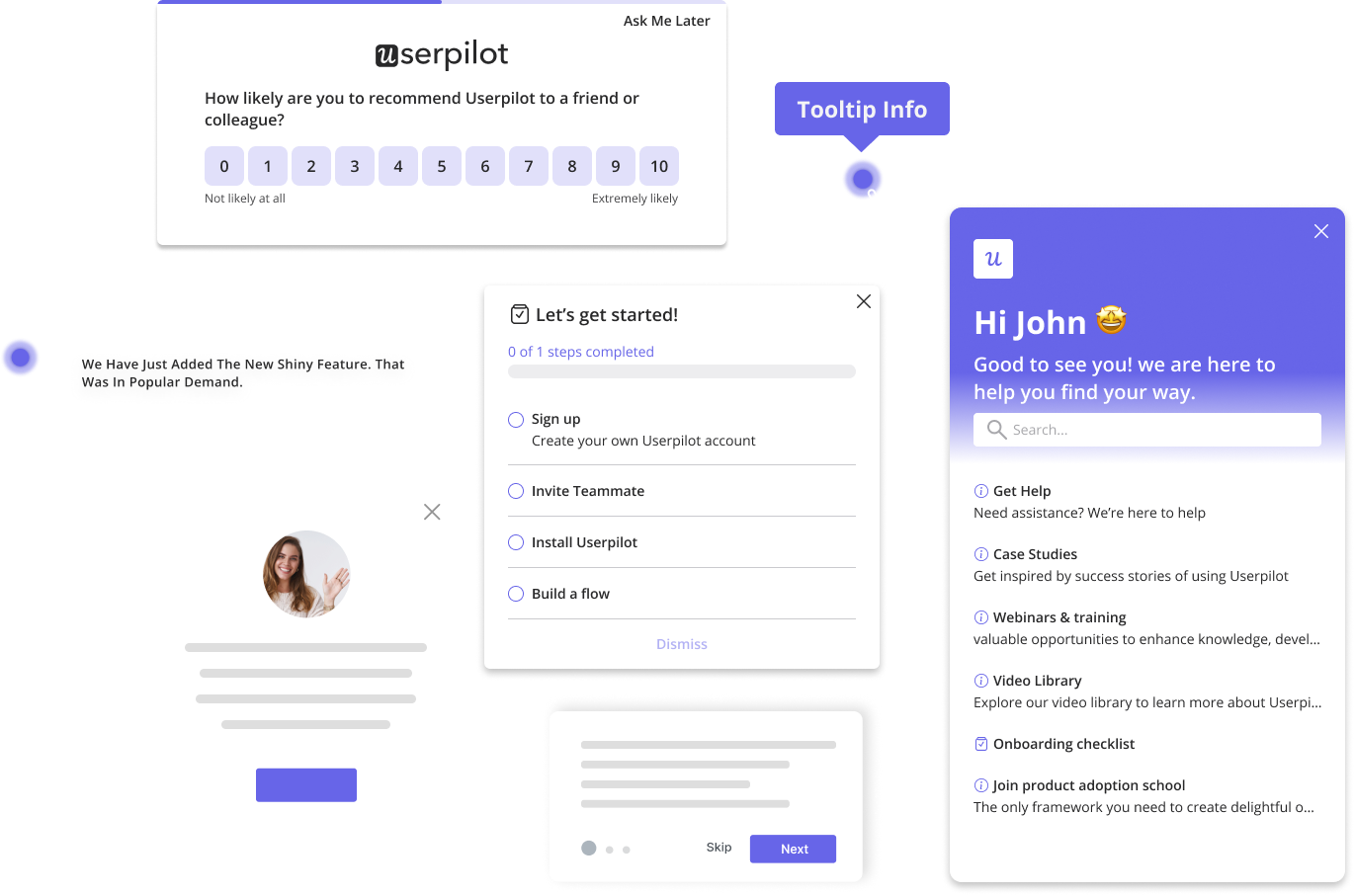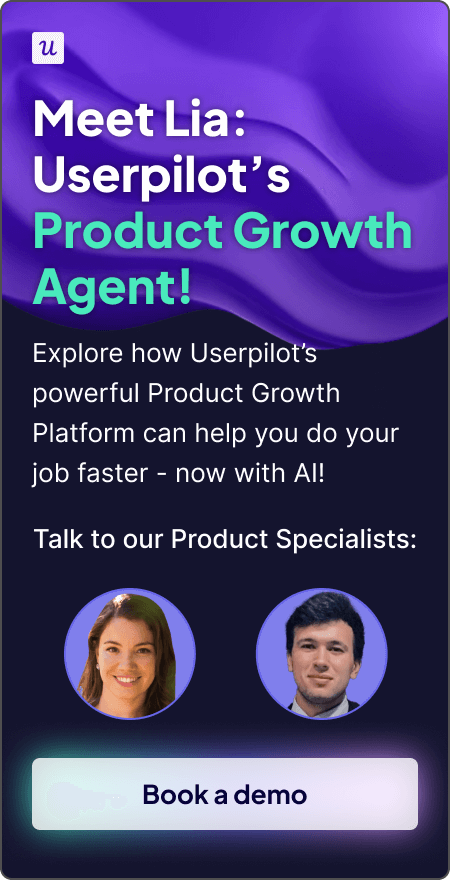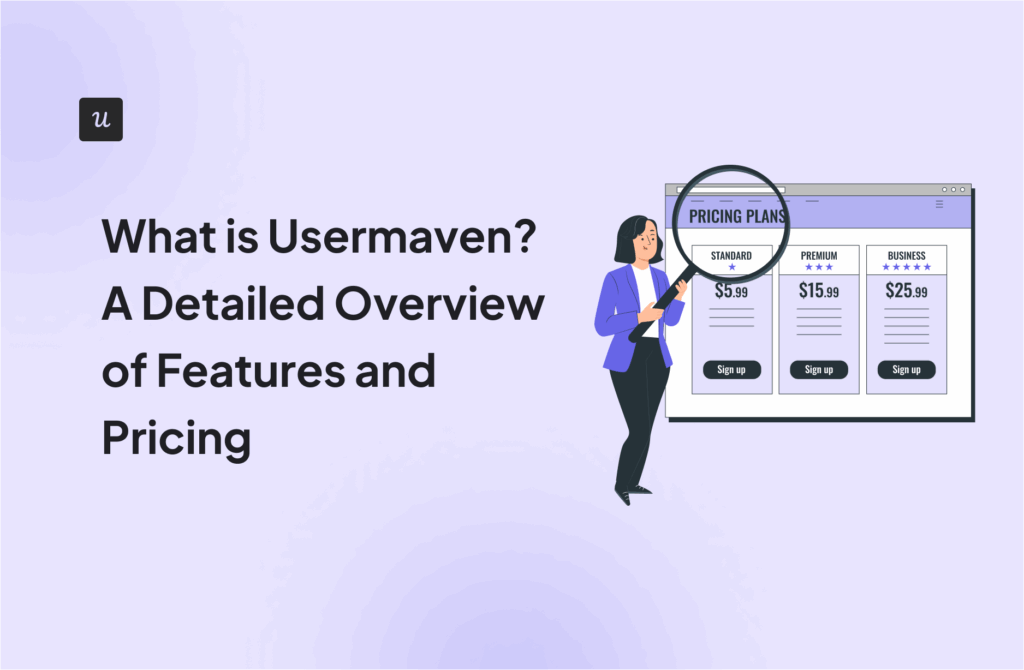
Is Pendo for Startups Worth It for Early-Stage Companies? [+ Alternatives]
Pendo is a product cloud company that offers one of the most popular digital adoption platforms out there. It’s probably best known for its analytics, making it a choice among the world’s leading software companies.
The company introduced Pendo for Startups in 2020. The idea behind it was to offer venture-backed startups (not private equity-funded startups) a tool whose functionality would enable them to prove product-market fit sooner.
But is this discounted package truly worth the investment for early-stage companies? With limited budgets and competing priorities, startup founders need to carefully evaluate whether Pendo’s startup offering provides sufficient value and useful product usage data compared to more affordable alternatives.
I’ve dug into Pendo’s offerings for early-stage companies, looked at what users say, and explored alternatives. Let me share my perspective on whether it’s truly worth your startup’s precious time and money.
Try Userpilot Now
See Why 1,000+ Teams Choose Userpilot
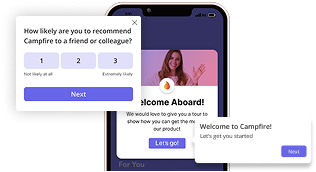
Overview of Pendo for startups
Pendo for Startups is a specialized package introduced by Pendo to make their enterprise-level product analytics and engagement platform accessible to early-stage companies. Originally launched in 2020, this offering aims to help venture-backed startups achieve product-market fit faster by providing essential tools for understanding user behavior and driving adoption.
The program recognizes that startups face unique challenges – they need powerful insights to make data-driven decisions and secure funding, but they often lack the budget for enterprise-level solutions.
However, it’s important to note that the original “Pendo for Startups” program has evolved. The company has transitioned to offering Free and Base plans that serve early-stage companies, though the specific startup-focused branding and messaging remain active on their website, alongside the features of Pendo Analytics.
From my experience, Pendo’s core offering is geared towards enterprise clients. Their “startup” program feels like an afterthought, a way to cast a wider net and hook smaller companies early.
Their pricing, while supposedly discounted for startups, is still significantly higher than many other solutions on the market, including Userpilot. For a startup strapped for cash and resources, especially when considering user onboarding Pendo’s price tag can be a deal-breaker.
Key features of Pendo for startups
Pendo for Startups offered three core Pendo capabilities for digital product teams:
- Insights: product and journey analytics enabling startups to identify and understand user behavior patterns.
- Sentiment: tools enabling startups to collect qualitative and quantitative user feedback via targeted in-app surveys and polls.
- Guidance: UX patterns and flows, like in-app messages, tooltips, and walkthroughs, help startups drive feature discovery and engagement. These are essential for the user onboarding process.
The two lowest Pendo plans, Free and Base, offer functionality in all three areas.
Pendo Insights (product analytics)
Pendo Insights provides in-depth analytics about product usage, user behavior, in-app guides usage, and other actionable data.
This includes:
- Retroactive data analytics that captures usage data from the installation.
- Unlimited page and feature tagging.
- Behavioral analytics, including retention, user paths, and funnels.
- Customizable reports and dashboards.
- Product Engagement Score tracking.
- Cross-app journey analysis.
Pendo Sentiment (feedback collection)
Pendo sentiment is simply the customer feedback collection and surveying feature, which helps you evaluate user experience and enhance the data you extract from Pendo Insights.
Features include:
- In-app surveys and polls.
- NPS (Net Promoter Score) surveys.
- Customer health score surveys.
- Both in-app and email survey delivery options.
Pendo Guidance (in-app messaging)
Pendo guidance lets you create in-app product tours to enhance the product experience.
This encompasses:
- Step-by-step interactive walkthroughs.
- Tooltips and contextual help.
- In-app announcements and messaging.
- Lightbox and banner notifications.
- Visual Design Studio with WYSIWYG editor.
Pendo for startups: Pricing
Pendo’s exact pricing isn’t publicly available and you must contact their sales team to get a quote. However, we can get some good estimates based on their customers’ insights.
According to a vendor negotiating Vendr, Pendo’s cost can range from $25,800 to $132,400 a year. So, the prices vary significantly, but at least you get the picture.
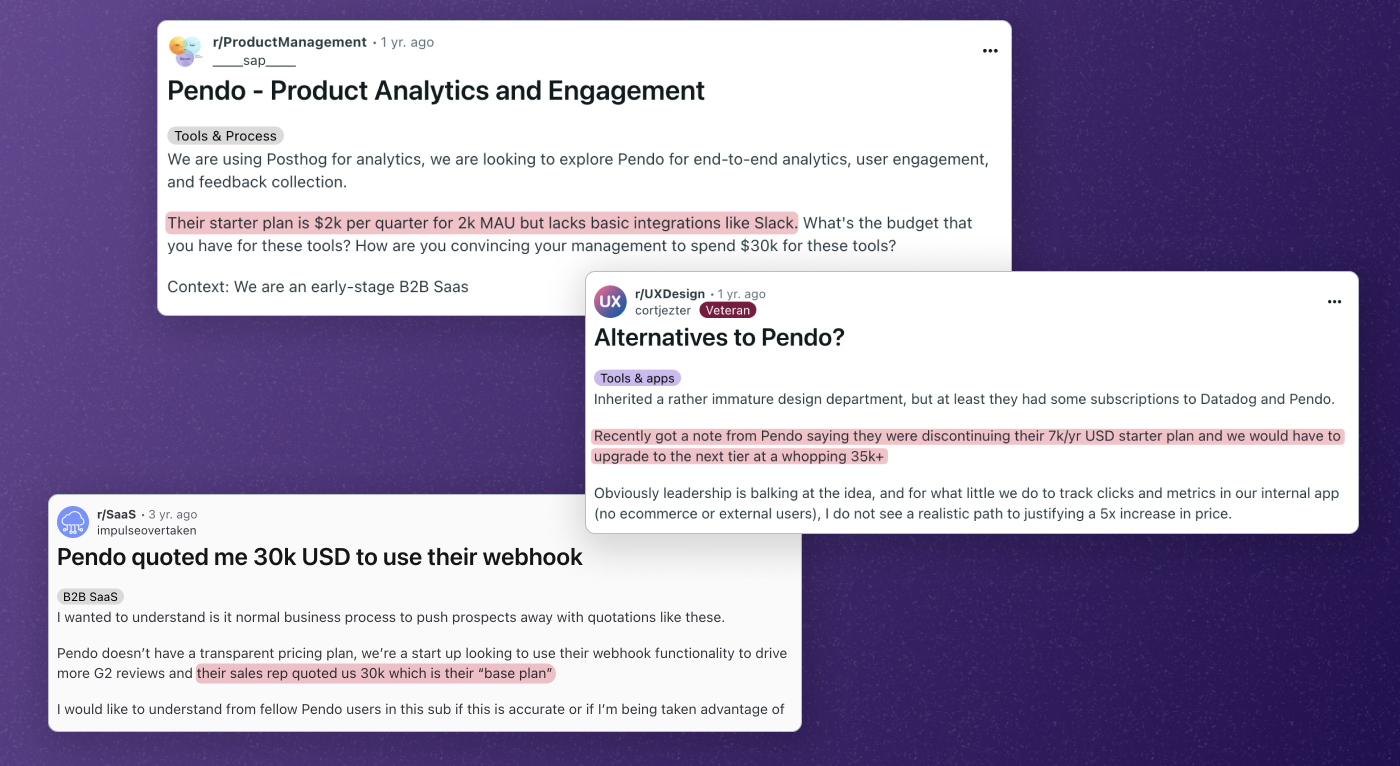
Pendo for startups: Limitations
While Pendo for Startups offers valuable functionality, several limitations make it less attractive for resource-conscious startups:
- Limited feature set: As I already mentioned, the set Pendo provides for the startup plan is very limited. It includes 1 resource center with restricted use, decent customization options, and funnel reports, which most other affordable Pendo competitors do.
- Static tour experience: The step-by-step tours are static and hard to customize. So if you are looking for an onboarding sequence that will fit right in with your product and accelerate adoption rates, Pendo will give you a hard time.
- One-time guide triggers: The guides are only triggered once, and can’t be embedded into a checklist or resource center. So if you have slow learners among your end-users, your support line will remain busy, even though you paid for the help that Pendo provides.
- Technical requirements: Despite being marketed as a no-code solution, Pendo typically requires at least one tech-savvy team member to handle setup and maintenance effectively.
- Limited integration options: The startup package doesn’t include integration capabilities by default, though these can be added as paid add-ons.
- Data processing delays: Product analytics data is processed in bulk at the top of each hour with up to 15-minute latency, which can limit real-time decision-making.
Users often echo these sentiments. They appreciate the ease of setup and code-free capabilities, especially how they don’t need to pull in precious developer resources to tag features for basic measurement. However, the price point and limited creative freedom for guides are recurring complaints.
My takeaway is this: While Pendo offers powerful tools at its enterprise level, the versions available to startups often feel like a diluted offering at a price that’s still too high for many early-stage budgets. For a startup, every investment needs to deliver maximum impact and flexibility.
The startup struggle: Why Pendo might miss the mark
I believe that a startup’s product strategy needs agility, deep user understanding, and efficient resource allocation. Pendo, for all its strengths, sometimes misses these crucial points for early-stage companies. Think about a startup’s main goals:
- Achieving Aha! Moments and Driving Activation: You need users to quickly grasp your product’s core value. This requires highly targeted, often personalized onboarding experiences that guide them through the essential steps. If your tools limit customization or force a linear path, you’re missing opportunities. For example, if you see user friction at a certain point, you want to fix it fast.
- Understanding User Behavior in Detail: While Pendo offers good analytics, the delayed data processing can hinder quick insights into funnel drop-offs or feature adoption. As a PM, I need to see what’s happening now to make immediate improvements to the product experience. I rely on tools that provide real-time user monitoring.
- Iterating Rapidly: Startups live and die by their ability to experiment and learn. If a tool makes it hard to quickly build, test, and change in-app experiences without developer help, it slows you down. A no-code solution should genuinely be no-code, with an intuitive interface for everyone on the team.
- Cost-Effectiveness: A startup’s budget is finite. Investing thousands of dollars in a tool that might not deliver all the needed functionality, or charges extra for basic integrations (like Salesforce or Zendesk), can be a serious drain. It often means sacrificing other vital investments.
I’ve learned that sometimes, a tool trying to do everything ends up being a jack of all trades, master of none, particularly at lower price points. This is where specialized or more affordable all-in-one platforms truly shine for startups.
Are there better alternatives for startups than Pendo?
If the pricing of the Starter plan seems excessive for the functionality it offers, there are a few solid options out there that you may want to consider instead of Pendo.
Let’s look at a couple of them: Userpilot and Appcues.
Userpilot
As a Product Manager at Userpilot, I might be biased, but I’ve genuinely seen how our platform empowers startups to tackle their product growth challenges. We’re designed specifically for product-led SaaS teams who need to drive product adoption and improve the user experience without relying on extensive coding. Here’s why I believe Userpilot is a better alternative to Pendo for startups:
- Real-Time Data and Actionable Analytics: Unlike Pendo’s hourly bulk processing, Userpilot offers real-time data analytics. This means I can see user behavior as it happens, analyze user paths and funnels, and even use session replays to understand the “why” behind user actions. This immediate insight is crucial for detecting and removing user friction and optimizing for a faster time-to-value. Our analytics dashboards (like new user activation and user retention) provide a clear picture of product health. Plus, our Autocapture feature automatically collects event data, which you can later visually label, ensuring you don’t miss out on important insights.
- Comprehensive In-App Guidance: We offer a rich variety of UI patterns to build truly interactive onboarding experiences. Beyond simple tooltips and modals, you can create dynamic checklists that guide users through setup tasks and a fully customizable resource center. The beauty is that these tools, like our Checklist builder, allow you to set diverse task types, define triggers, and even incorporate localization to cater to a global audience. Our banners and hotspots are also fantastic for making announcements or highlighting features without interrupting the user.
- Powerful Segmentation and Personalization: I can create highly specific user segments based on user properties, company data, or in-app behavior. This allows me to deliver personalized experiences exactly when and where they’re needed. For example, I can use our personalization feature to greet users by name in an onboarding flow or trigger a specific message based on a feature they just used.
- Robust User Feedback Tools: Collecting in-app feedback is seamless with Userpilot. We offer customizable surveys and NPS surveys that can be triggered contextually. This is vital for understanding customer sentiment and identifying areas for product improvement. You can even use our NPS response analytics to dive deep into feedback categories and address issues.
- Experimentation and A/B Testing: Our experimentation tools allow me to A/B test different onboarding flows or in-app messages to see which performs best against a control group or another variant. This helps validate ideas and ensures you’re always optimizing for better user activation and engagement.
- Mobile Support: In today’s multi-platform world, having a tool that supports both web and mobile is a game-changer. Userpilot’s mobile capabilities mean I can design carousels and slideouts tailored for mobile UX, send push notifications, and track mobile-specific app engagement metrics.
- Developer-Friendly Setup with No-Code Flexibility: The initial installation is straightforward for developers, supporting JavaScript, Segment, or GTM. Once installed, product teams can build and manage experiences with our visual builder without writing a single line of code. Features like AI-assisted copywriting, saving UI templates, and theme customization further speed up the process.
- Data Ownership and Integrations: We believe in giving you control over your data. Our Data Sync feature allows you to export your raw event stream into your own data infrastructure (like S3 or GCS) for deeper analysis and data democratization. We also integrate with popular tools like HubSpot, Salesforce, Amplitude, Mixpanel, and Segment, ensuring your product data works seamlessly with your existing tech stack.
We often hear from customers like Shelterluv, who switched from Pendo to Userpilot and found better value and usability, improving their team’s productivity and customer experience. Another example is Cuvama, an ex-Pendo customer who found better value and usability with Userpilot, highlighting our platform’s user-friendly nature.
What advantages does Userpilot have over Pendo for startups?
- It’s more affordable! The lowest Starter plan starts at $299/month (billed annually).
- Userpilot relays all the usage data in real-time, which means you can use it to trigger contextual in-app guidance.
- It offers more advanced segmentation for detailed analytics and personalized in-app messages.
- You can build more interactive onboarding flows than Pendo Tours.
- You can trigger checklists anywhere in the product, not just from the resource center.
- The resource center functionality is available in all plans.
- NPS tools are included in all plans and allow you to tag and analyze qualitative responses.
- A/B testing for in-app flows.
- Integrations with Heap, Segment, and more.
- It’s recommended for web applications.
Userpilot now has mobile and email too, which makes it the perfect solution to drive user engagement across web and mobile apps.
Userpilot pricing
Userpilot offers three different plans: Starter, Growth, and Enterprise. Each of them is more competitively priced than the Pendo equivalents.
The lowest Starter plan, which is the counterpart of the Pendo Base plan, is accessible via an annual subscription and starts at $299/month. Here’s what it includes:
- User engagement: Create and customize different UI patterns like spotlights, slide-outs, modals, tooltips, banners, and checklists to boost engagement.
- Net Promoter Score: Collect and analyze user sentiment data with NPS surveys, NPS dashboard, and response tagging. Other types of user feedback surveys aren’t available on the Starter plan.
- Basic product analytics: Monitor user actions with tracked events and visualize them with product trend reports. Other advanced reports, such as cohort tables, user paths, and funnels, are missing in this plan.
- People & tracking: You can access individual user profiles for granular analysis and segment users based on different attributes for a maximum of 10 segments.
- Reporting, targeting & customization: Starter gives access to customized branding, engagement reports, and weekly digests.
- Up to 2,000 monthly active users: The Starter plan can accommodate up to 2,000 active users per month.
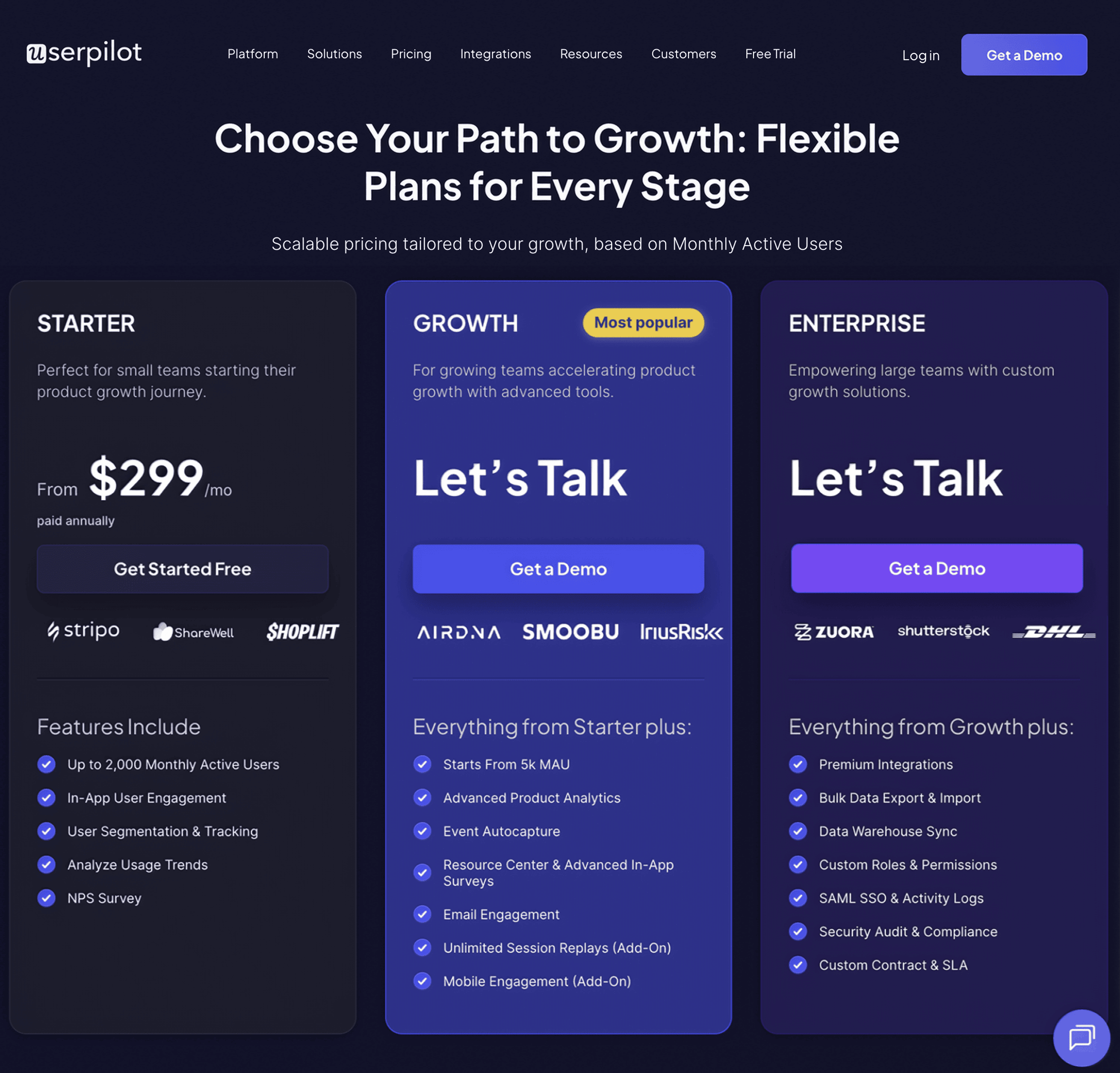
Userpilot reviews
The competitive pricing doesn’t mean any corner-cutting, though. Userpilot’s functionality, user-friendly UI, and ease of use are recognized by G2 reviewers.
They praise Userpilot’s engagement functionality:
Amazing tool does all that we need! A must have for a startup!… I love how you can create user adoption nudges, popups, modals, all without code!
Apart from the engagement layer, the analytics, reliability, and quality of support are also highly rated.
There are a few core reasons we’re fans of Userpilot:
1. At its core, it’s a well-designed product that is easy to grow quickly.
2. Great support and account management. We quickly reached someone and received detailed information to help us level up.
3. It does the job reliably! I’ve never encountered an issue with it bugging out in any way.
4. Pricing is unbeatable for capabilities in the space.
Appcues
Appcues is another product onboarding tool and a solid alternative to Pendo. Product and marketing teams use it mostly to analyze product usage, collect user feedback, enhance their user onboarding, and drive product adoption.
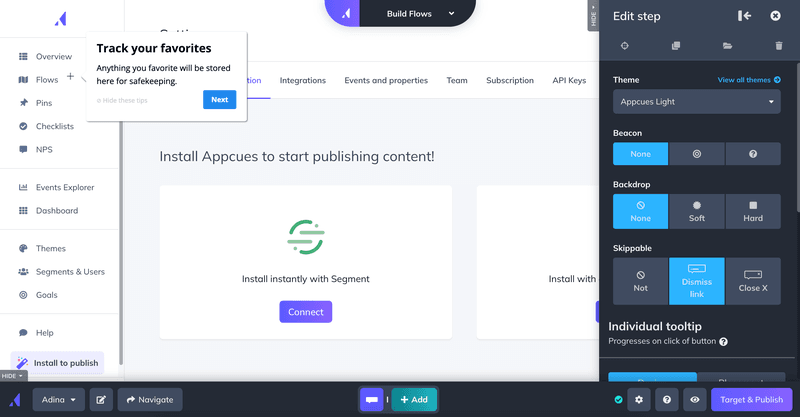
Why is it a better value for money than Pendo for startups?
Here are a few reasons:
- Better in-app guidance features: 4 UX patterns + Pins vs Pendo’s 4.
- Integrations with analytics tools (two-way integrations with Amplitude, Mixpanel, and Heap, as well as Kissmetrics and Fullstory).
- A/B testing for onboarding flows.
- Recommended for mobile applications.
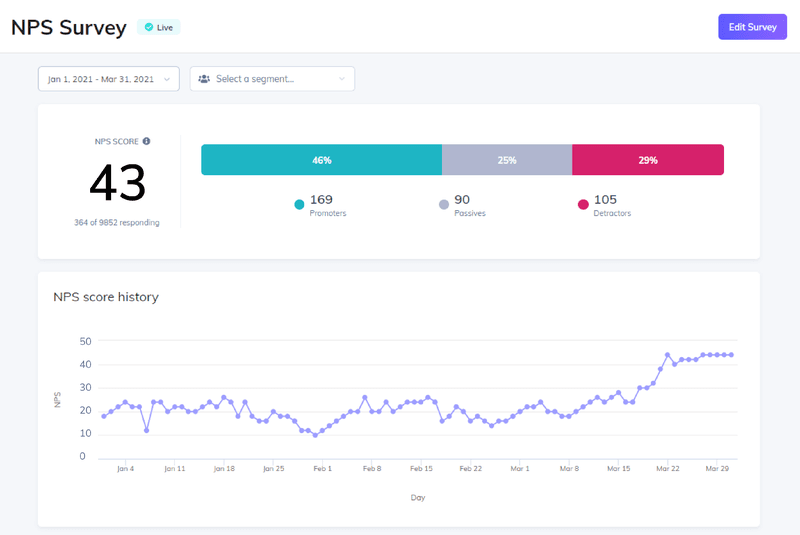
Appcues pricing
Appcues offers three different plans: Start, Grow, and Enterprise.
The lowest, Start plan, starts at $300/month and it offers:
- 5 User Licenses
- 50 Published Experiences
- Flows, Checklists, and more
- Reporting & analysis
- Email support
The functionality is fairly limited compared to what you get with Userpilot, but it is still more attractive than Pendo’s Starter plan.
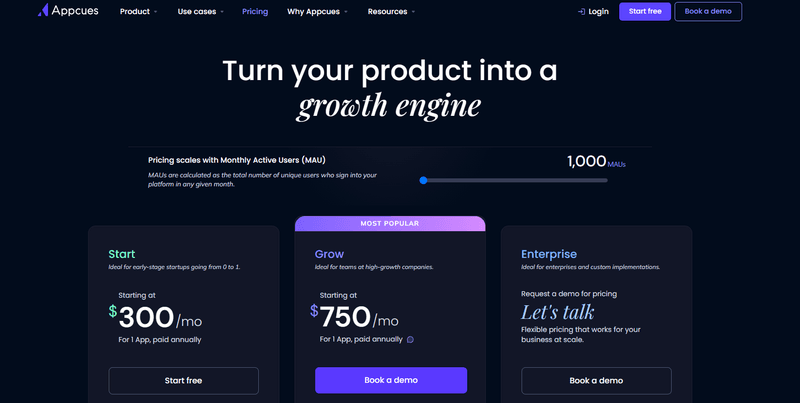
Appcues reviews
The product gets excellent reviews from its users as well.
G2 reviewers praise how easy it is to design in-app flows without the developer’s help. They also praise its user behavior analytics.
For the most part, Appcues is pretty easy to implement. Once installed, it takes no time to use their templates to create your first flow and publish it for customers. They’ve also just released a few features called click to track that now allows you to track clicks and hovers on anything on your site. This is super helpful if you’re trying to understand if the flow you created actually worked or not.
A glowing Appcues review.
Appcues has been an excellent tool for us here at Pixelz in communicating major feature announcements, facilitating customer onboardings, and analyzing user behavior on the platform.
Conclusion
The rationale behind Pendo for startups was sound. It was meant to be a tool that helps Pendo customers to analyze user behavior and collect feedback in order to make more informed decisions, ultimately driving their success. This was to help them secure further funding.
However, the reality is that the lowest plans don’t offer enough functionality while being unaffordable for early-stage companies. There are products out there that outcompete it hands down.
If you want to see how Userpilot can drive the growth of your SaaS startup in its early days, book the demo!
Userpilot strives to provide accurate information to help businesses determine the best solution for their particular needs. Due to the dynamic nature of the industry, the features offered by Userpilot and others often change over time. The statements made in this article are accurate to the best of Userpilot’s knowledge as of its publication/most recent update on August 18th, 2025.

